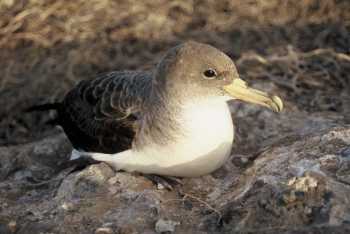Airam Rodríguez (Department of Evolutionary Ecology, Estación Biológica de Doñana, Seville, Spain) and colleagues, writing in the journal Animal Conservation, have looked at Cory's Shearwaters Calonectris diomedea being affected by light pollution when fledging.
The paper's abstract follows:
"Every year and across the world, thousands of fledglings of different petrel species crash into human structures because they are disorientated by artificial lights during their first flights. As this phenomenon is rather predictable, rescue campaigns are organized to help birds to reach the ocean, but unfortunately, a low proportion gets hurt or dies. Despite the huge number of affected individuals, and the fact that the problem was detected a long time ago, little is known on this source of mortality. We have studied the factors (i.e. body condition, plumage development, fledging date and sex) influencing the mortality of Cory's Shearwater Calonectris diomedea fledglings stranded inland due to light pollution in Tenerife (Canary Islands) during two consecutive breeding seasons (2009 and 2010). Late fledglings showed lower values of a body condition index than early ones. No sex biases were detected, neither considering stranded birds overall, nor for recovery dates or in the body condition of rescued fledglings. Our results indicate that late birds stranded by lights showing abundant down are more susceptible to fatal collisions and that the lights do not selectively kill birds with lower body condition indices. An enhancement of veterinary care should be done during the last part of the fledging period when more fatal collisions occur, especially focused on fledglings with abundant down. More research to determine why some individuals end up disoriented around artificial lights and others do not is urgently needed to minimize or prevent fallouts."
Reference:
Rodríguez, A., Rodríguez, B., Curbelo, Á.J., Pérez, A., Marrero, S. & Negro, J.J. 2012. Factors affecting mortality of shearwaters stranded by light pollution. Animal Conservation. doi:10.1111/j.1469-1795.2012.00544.x.

Corys'Shearwater. Photograph by Paulo Catry
Click here to read of another paper by the senior author on light pollution affecting shearwaters.
With thanks to Barry Baker for information.
John Cooper, ACAP Information Officer, 4 May 2012

 English
English  Français
Français  Español
Español